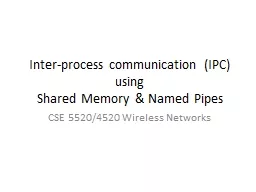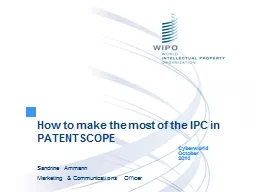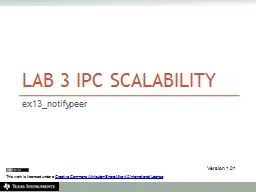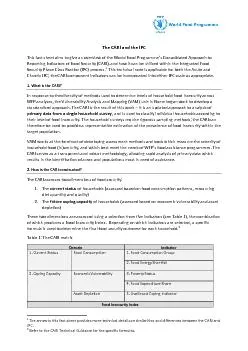PPT-Inter-process communication (IPC) using
Author : ellena-manuel | Published Date : 2016-06-04
Shared Memory amp Named Pipes CSE 55204520 Wireless Networks Outline InterProcess communication IPC Shared Memory Segments Introduction Pros and Cons How to create
Presentation Embed Code
Download Presentation
Download Presentation The PPT/PDF document "Inter-process communication (IPC) using" is the property of its rightful owner. Permission is granted to download and print the materials on this website for personal, non-commercial use only, and to display it on your personal computer provided you do not modify the materials and that you retain all copyright notices contained in the materials. By downloading content from our website, you accept the terms of this agreement.
Inter-process communication (IPC) using: Transcript
Download Rules Of Document
"Inter-process communication (IPC) using"The content belongs to its owner. You may download and print it for personal use, without modification, and keep all copyright notices. By downloading, you agree to these terms.
Related Documents














